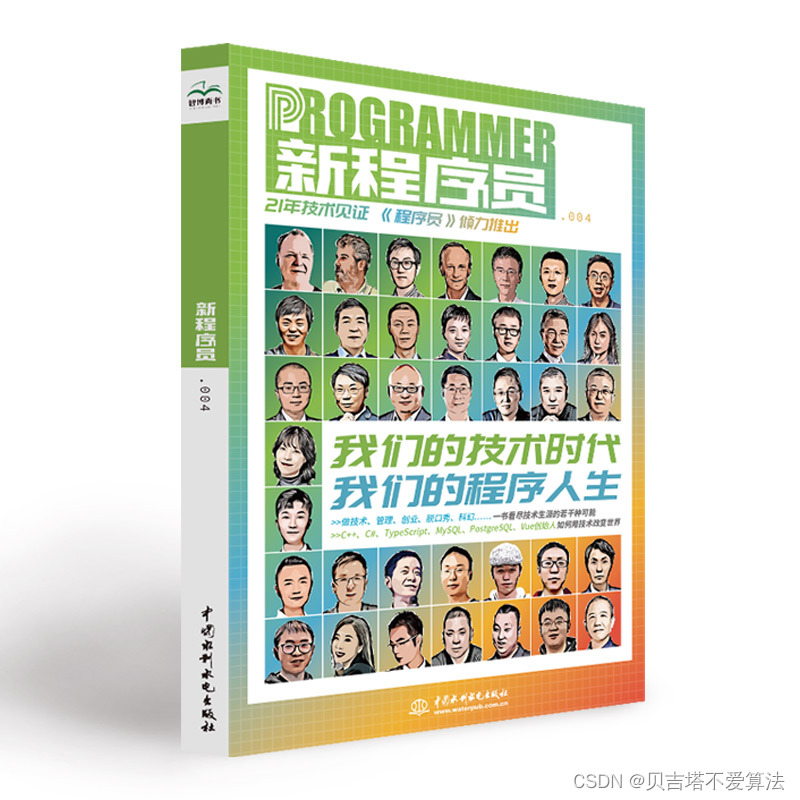深潜Koltin协程:挂起是如何工作的?
Posted RikkaTheWorld
tags:
篇首语:本文由小常识网(cha138.com)小编为大家整理,主要介绍了深潜Koltin协程:挂起是如何工作的?相关的知识,希望对你有一定的参考价值。
系列电子书:传送门
挂起函数是 Kotlin 协程的标志。挂起功能是建立所有其他 Kotlin Coroutines 概念的最基本特性。我们本章的目标就是理解它是如何工作的。
挂起一个协程意味着在中间停止它。这类似与电子游戏中的停止:你在一个检查点保存,关闭游戏后,你和你的电脑可以专注到别的事情上。接着,当你想在一段时间后继续玩游戏时,你可以再次打开游戏,并从保存的检查点恢复,这样你就可以从之前停止的地方开始玩游戏。协程同理,当它们被挂起时,会返回一个 Continuation。这就像是游戏中的存档点:我们可以使用它从我们停止的地方继续。
注意,它与线程非常不同,线程不能被保存,只能被阻塞。而协程要强大的多。挂起时,它不会消耗任何资源。协程可以在不同的线程上恢复(resume),并且(至少在理论上)一个协程可以被序列化、反序列化,然后再恢复。
恢复
让我们来看看实际情况。为此我们需要一个协程。我们使用协程构建器(如 runBlocking 或 launch)来启动协程,这会在后面介绍到。也有一种更简单的方法:我们可以挂起一个 main 函数。
挂起函数是一个可以挂起协程的函数。这意味着它们必须从协程(或另一个挂起函数)中调用。最后,它们需要一些东西来挂起,下面的 main 函数就是一个挂起函数,所以当我们运行它时,Kotlin 将在协程中启动它。
suspend fun main()
println("Before")
println("After")
// Before
// After
这是一个简单的程序,将会打印“Before”和“After”。如果我们停在这两个打印函数之间,会发生什么呢?为此,我们可以使用 Kotlin 协程库提供的 suspendCoroutine 函数。
suspend fun main()
println("Before")
suspendCoroutine<Unit>
println("After")
// Before
如果你调用上述代码,你将看不到“After”,并且代码不会停止运行(因为我们的 main 函数永远不会结束)。协程在“Before”之后挂起,我们的函数停止了,并永远不会恢复。那么怎样才能恢复呢?前面提到的 Continuation 在哪里呢?
再看下 suspendCoroutin 的调用,注意它以一个 lambda 表达式结束。作为参数传递的函数将在挂起之前被调用。该函数会获得一个 continuation 作为参数:
suspend fun main()
println("Before")
suspendCoroutine<Unit> continuation ->
println("Before too")
println("After")
// Before
// Before too
这样的函数就地调用另一个函数并不是什么新鲜事。这类似于 let、apply 或者 useLines。 suspendCoroutine 函数以同样的方式设计,这使得在挂起之前使用 continuation 成为可能。如果在 suspendCoroutine 调用之后运行 lambda 就太晚了,因此,会在函数挂起之前调用作为参数传递给 suspendCoroutine 的 lambda 表达式。这个 lambda 的作用是将 continuation 存储在某处,或计划是否恢复协程。
我们可以使用它来立即恢复:
suspend fun main()
println("Before")
suspendCoroutine<Unit> continuation ->
continuation.resume(Unit)
println("After")
// Before
// After
注意,上面例子中的“After”被打印出来了,因为我们在 suspendCoroutine 中调用了 resume 函数。
从 Kotlin 1.3开始,Continuation 的定义发生了变化。代替了传统的 resume 和 resumeWithException,使用了一个接收 Result 的 resumeWith 函数。我们正在使用的 resume 和 resumeWithException ,它们其实是调用了 resumeWith 的扩展函数。
inline fun <T> Continuation<T>.resume(value: T): Unit =
resumeWith(Result.success(value))
inline fun <T> Continuation<T>.resumeWithException(
exception: Throwable
): Unit = resumeWith(Result.failure(exception))
我们也可以启动一个不同的线程,它将睡眠一段时间,并在一定时间后恢复:
suspend fun main()
println("Before")
suspendCoroutine<Unit> continuation ->
thread
println("Suspended")
Thread.sleep(1000)
continuation.resume(Unit)
println("Resumed")
println("After")
// Before
// Suspended
// (1 second delay)
// After
// Resumed
这是一个重要的观察结果,请注意,我们可以创建一个函数,该函数将在一个定义的周期之后恢复 continuation。在这种情况下,continuation 由 lambda 表达式获得,如下面代码段所示:
fun continueAfterSecond(continuation: Continuation<Unit>)
thread
Thread.sleep(1000)
continuation.resume(Unit)
suspend fun main()
println("Before")
suspendCoroutine<Unit> continuation ->
continueAfterSecond(continuation)
println("After")
// Before
// (1 sec)
// After
//sampleEnd
这种机制是可行的,但它没有必要创建线程,只是为了在一秒钟不活动之后结束它们,线程并不廉价,所以为什么要浪费它们呢?一个更好的方法是设置一个“闹钟”。在 JVM 中,我们可以使用 ScheduledExecutorService。我们可以设置它在一段指定的时间后调用 continuation.resume(Unit)。
private val executor =
Executors.newSingleThreadScheduledExecutor
Thread(it, "scheduler").apply isDaemon = true
suspend fun main()
println("Before")
suspendCoroutine<Unit> continuation ->
executor.schedule(
continuation.resume(Unit)
, 1000, TimeUnit.MILLISECONDS)
println("After")
// Before
// (1 second delay)
// After
挂起一段时间似乎是一个有用的功能。让我们把它提取成一个函数,将它命名为 delay:
private val executor =
Executors.newSingleThreadScheduledExecutor
Thread(it, "scheduler").apply isDaemon = true
suspend fun delay(timeMillis: Long): Unit =
suspendCoroutine cont ->
executor.schedule(
cont.resume(Unit)
, timeMillis, TimeUnit.MILLISECONDS)
suspend fun main()
println("Before")
delay(1000)
println("After")
// Before
// (1 second delay)
// After
执行程序仍然使用一个线程,但对于所有使用 delay 函数的协程来说,它又是一个线程,这比每次需要等待一段时间阻塞一个线程要好得多。
这正是 Kotlin Coroutines 库过去实现 delay 函数的方式。目前的实现比较复杂,主要是为了支持测试,但其基本思想仍然不变。
携带一个值恢复
你可能会关心的一件事情是:为什么我们要将 Unit 传递给 resume 函数?你可能还想知道为什么使用 Unit 作为 suspendCoroutine 上的类型参数(泛型)。事实上,这两者相同并不是巧合。Unit 也是该函数的返回值,并且是 Continuation 的泛型类型:
val ret: Unit =
suspendCoroutine<Unit> cont: Continuation<Unit> ->
cont.resume(Unit)
当调用 suspendCoroutine 时,可以指定其 continuation 返回的类型。调用 resume 时需要使用相同的类型。
suspend fun main()
val i: Int = suspendCoroutine<Int> cont ->
cont.resume(42)
println(i) // 42
val str: String = suspendCoroutine<String> cont ->
cont.resume("Some text")
println(str) // Some text
val b: Boolean = suspendCoroutine<Boolean> cont ->
cont.resume(true)
println(b) // true
这与游戏类比并不相符。我不知道有哪款游戏能够在恢复保存时添加新内容(除非你开挂,或者google了一下)。然而,它对于协程来说是非常有意义的。我们经常挂起是因为我们在等待一些数据,比如来自 API 的网络响应。这是一个常见的场景。线程一直在运行业务逻辑,直到它得到一些数据。如果没有协程,我们的线程需要坐下来慢慢等待这个子线程返回数据。这是一个巨大的浪费,因为线程是昂贵的,特别是如果这是一个重要的线程,例如 android 的主线程。对于协程,它只是挂起并给我们一个 Continueation 的指令:“一旦你得到了数据,就把将其发送至 resume”。然后线程就可以做其他事情了,一旦拿到数据,线程将被用来从协程被挂起的地方恢复。
为了查看实际情况,让我们看看如何挂起直到接收到一些数据。在下面的例子中,我们使用了一个外部实现的回调函数 requestUser:
suspend fun main()
println("Before")
val user = suspendCoroutine<User> cont ->
requestUser user ->
cont.resume(user)
println(user)
println("After")
// Before
// (1 second delay)
// User(name=Test)
// After
直接调用 suspendCoroutine 并不方便,我们更希望有一个挂起函数可以替代,我们可以自行提取:
suspend fun requestUser(): User
return suspendCoroutine<User> cont ->
requestUser user ->
cont.resume(user)
suspend fun main()
println("Before")
val user = requestUser()
println(user)
println("After")
目前,许多主流的库已经支持挂起功能,例如 Retrofit 和 Room,这就是为什么我们很少需要在挂起函数中使用回调函数的原因。然而,如果你有这样的需求,我建议使用 suspendCancellableCoroutine (代替 suspendCoroutine),这将在取消章节中解释。
suspend fun requestUser(): User
return suspendCancellableCoroutine<User> cont ->
requestUser user ->
cont.resume(user)
你可能知道,如果 API 给我们的不是数据而是某种异常,会发生什么。如果服务器死机或者响应错误该怎么办?在这种情况下,我们不能返回数据,相反,我们应该从协程挂起的地方抛出一个异常。这就是我们需要在例外情况下恢复的地方。
携带一个异常恢复
我们调用每个函数都可能返回某个值或抛出异常。对于 suspendCoroutine 亦是如此。当调用 resume 时,它返回数据。当调用 resumeWithException 时,它返回异常,在挂起点抛出:
class MyException : Throwable("Just an exception")
suspend fun main()
try
suspendCoroutine<Unit> cont ->
cont.resumeWithException(MyException())
catch (e: MyException)
println("Caught!")
// Caught!
这种机制用于解决各种各样的问题,例如,发送网络异常的信号:
suspend fun requestUser(): User
return suspendCancellableCoroutine<User> cont ->
requestUser resp ->
if (resp.isSuccessful)
cont.resume(resp.data)
else
val e = ApiException(
resp.code,
resp.message
)
cont.resumeWithException(e)
suspend fun requestNews(): News
return suspendCancellableCoroutine<News> cont ->
requestNews(
onSuccess = news -> cont.resume(news) ,
onError = e -> cont.resumeWithException(e)
)
挂起一个协程,而不是函数
这里需要强调的点是:我们挂起的是协程,而不是函数。挂起函数不是协程,只是可以挂起协程的函数。假设我们将一个函数存储在某个变量中,并试图在函数调用后恢复它:
// 不要这么做!
var continuation: Continuation<Unit>? = null
suspend fun suspendAndSetContinuation()
suspendCoroutine<Unit> cont ->
continuation = cont
suspend fun main()
println("Before")
suspendAndSetContinuation()
continuation?.resume(Unit)
println("After")
// Before
这没有道理的,这相当于停止了游戏,并计划在游戏的存档点之后的某一点开始。resume 将永远不会被调用。你只会看到“Before”,程序永远不会结束,除非我们在另一个线程或另一个协程在恢复它。为了展示这一点,我们可以设置另一个协程在一秒钟后恢复:
// 不要这么做,会有潜在的内存泄漏风险
var continuation: Continuation<Unit>? = null
suspend fun suspendAndSetContinuation()
suspendCoroutine<Unit> cont ->
continuation = cont
suspend fun main() = coroutineScope
println("Before")
launch
delay(1000)
continuation?.resume(Unit)
suspendAndSetContinuation()
println("After")
// Before
// (1 second delay)
// After
总结
我希望现在你能从使用者的角度清楚的了解挂起是如何工作的。这很重要,我们将在整本书中看到这一点,它也很实用,因为现在你可以将回调函数转化成挂起函数。如果你像我一样,想要确切的知道事情在底层是如何运行的,我们将在下一章讨论,如果你觉得不需要知道,那就跳过它,它并不实用,只是揭示了 Kotlin 协程的魔力。
 开发者涨薪指南
开发者涨薪指南
 48位大咖的思考法则、工作方式、逻辑体系
48位大咖的思考法则、工作方式、逻辑体系
以上是关于深潜Koltin协程:挂起是如何工作的?的主要内容,如果未能解决你的问题,请参考以下文章